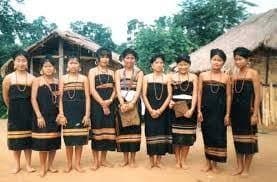
1. Mangrove Forests
- A Mangrove is a small tree or shrub that grows along coastlines, taking root in salty sediments, often underwater.
- They are found only along sheltered coastlines within the tropical or subtropical latitudes because they cannot withstand freezing temperatures.
Mangrove Forests in India
- Sundarbans in West Bengal are the largest mangrove forest regions in the world. It is listed as a UNESCO World Heritage Site.
- Bhitarkanika Mangroves in Odisha were created by the two river deltas of River Brahmani and Baitarani. (Ramsar Wetlands)
- Godavari-Krishna Mangroves in Andhra Pradesh extends from Odisha to Tamil Nadu.
Conservation Initiatives
- International Society for Mangrove Ecosystem (ISME)
- Blue Carbon Initiative (BCI)
- 26th July - International Day for the Conservation of the Mangrove Ecosystem
- Mangroves for the Future Initiative (MFF)
- National Mangrove Committee
2. First Asian Buddhist Summit in New Delhi
- Ministry of Culture in collaboration with the International Buddhist Confederation.
- Venue: New Delhi.
- Theme: ‘Role of Buddha Dhamma in Strengthening Asia’.
- The Summit is also a manifestation of India’s Act East Policy, which is principled on collective, inclusive and spiritual development of Asia with Dhamma as the guiding light.
- India's Act East Policy (AEP) is a foreign policy initiative that aims to strengthen economic and strategic ties with Southeast Asia and the Indo-Pacific region
3. Thadou Tribe
- They are an indigenous people who live in the hill country adjacent to the Imphal Valley in the northeastern Indian state of Manipur.
- They speak Chin and Thado which belong to the Tibeto-Burman family of the Sino-Tibetan languages.
